43 start with B start with B
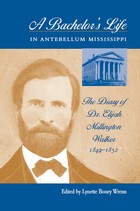
“This is a splendid diary of a man and physician during the late antebellum years, sure to interest not only historians of medicine but also historians of gender, the South, and antebellum politics. . . . An exceptionally useful historical document as well as a good read.” —Steven M. Stowe, Indiana University
Elijah Millington Walker began to keep a diary midway through his medical apprenticeship in Oxford, Mississippi. He composed a lengthy preface to the diary, in which he remembered his life from the time of his family’s arrival in north Mississippi in 1834, when he was ten years old, until late 1848, when the University of Mississippi opened and Walker’s diary begins.
On one level, the diary records the life of a bachelor, chronicling the difficulties of an ambitious young physician who would like to marry but is hampered by poverty and his professional aspirations. Walker details the qualities he desires in a wife and criticizes women who do not measure up; a loyal wife, in Walker’s highly romanticized image, remains a true helpmeet even to the most debased drunkard. On another level, Walker describes various medical cases, giving readers an idea of the kinds of diseases prevalent in the lower South at mid-century, as well as their treatment by orthodox physicians. In this vivid chronicle of everyday life in antebellum Mississippi, Walker also finds space to comment on a wide range of topics that affected the state and the region, including pioneer life in north Mississippi, evangelical Protestantism, the new state university at Oxford, the threat of secession in 1849–50, Henry Clay’s Compromise of 1850, foreign affairs, and local railroad development. A strong defender of the Union at mid-century, Walker nonetheless defended slavery and distinctively Southern institutions.
A Bachelor’s Life in Antebellum Mississippi brings to the public one of the few diaries of a very intelligent yet “ordinary” man, a non-elite member of a society dominated by a planter aristocracy. The author’s frankness and flair for writing reflect a way of life not often seen; this volume will thus prove a valuable addition to the body of primary documents from the early republic.
Lynette Boney Wrenn has taught history at Memphis State University and Southwestern College. She is the author of Crisis and Commission Government in Memphis: Elite Rule in a Gilded Age City and Cinderella of the New South: A History of the Cottonseed Industry, 1855–1955. Wrenn lives in Greensboro, North Carolina.
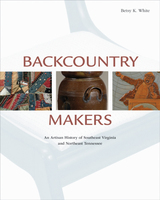
Beautifully illustrated with some 230 photographs, most of them in color, this volume includes biographical sketches of seventy-five makers—potters, weavers, spinners, quilters, embroiderers, cabinetmakers, metalsmiths, clocksmiths, gunsmiths, and artists—who worked in the region from the earliest eighteenth-century settlement days to the late twentieth century. The entry for each artisan is accompanied by one or more images of a signed or marked work, or, in a number of instances, an unmarked work with certain provenance.
These vignettes offer a fascinating glimpse of the people behind the various pieces, describing their background, family life, and where they learned their trade. Using census records and other documentary evidence, White has traced the earliest of these artisans from their origins in such places as Europe and Philadelphia down through the Great Valley of Virginia to their ultimate destinations in southwest Virginia and northeast Tennessee. Along with the photos displaying the products of their craftsmanship, the book also includes a number of evocative images of the artists and their homes and towns, thus giving the reader a fuller sense of the region where these gifted people lived and worked.
One of the few studies to addresses handmade objects in this locale—and one of the even fewer works to focus on the artisans
themselves— Backcountry Makers will be of great value not only to scholars of material culture and the arts in Appalachia but also to those who collect regional antiques and crafts and want to know more about the individuals who made them.
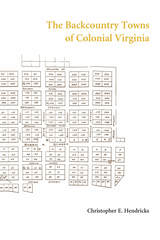
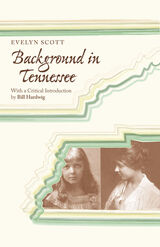
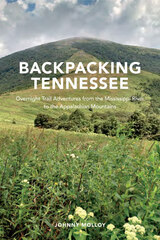
“The reason I travel and explore the outdoors is simple,” writes Johnny Molloy, “the world is a beautiful place!” And Molloy would know: he has backpacked more than 2,500 nights in forty states. It is this experience—much of it garnered in his home state of Tennessee—combined with his extensive production of guidebooks spanning activities from hiking and camping to paddling and bicycling, that enabled him to produce Backpacking Tennessee: Overnight Trail Adventures from the Mississippi River to the Appalachian Mountains.
Complete with directions, distances, descriptions, and maps, Backpacking Tennessee is divided into four sections that together outline forty overnight hikes across West Tennessee, Middle Tennessee, the Cumberland Plateau, and East Tennessee and the Appalachian Mountains. The trails Molloy has chosen to highlight are a mix of well-known hikes and lesser-known areas, ranging in distance and difficulty for both novice hikers and experienced backpackers. Woven throughout the trail descriptions are comments on scenery, notes about safety, and historical information that help readers get a true feel for each hike. To round out his comprehensive guide, Molloy also includes ratings, 1–5, on the family- and dog-friendliness of each trail—an especially helpful feature for readers bringing loved ones along.
From the Great Smoky Mountains National Park and Cherokee National Forest to Big South Fork and Land Between the Lakes, Tennessee offers thousands of miles of trails for adventurers looking to explore. For budding outdoor enthusiasts and experienced backpackers alike, Backpacking Tennessee answers the timeless question: where do we go next?

In Ballplayers on Stage, Travis Stern explores the relationship between professional baseball and professional theater in the late nineteenth and early twentieth centuries. In particular, he argues that examining theater from this era helps us better understand baseball’s development and its transformation from a strictly working-class attraction to an entertainment that attracted interest from America’s emerging middle class. Baseball players’ theatrical productions drew audiences from the baseball world, and in turn their performances on the diamond began to attract middle-class crowds. But how did the on-field persona of those players as heroes or villains contribute to their image in the theater, and vice versa?
To explore these questions, Stern examines case studies of five representative players from baseball’s pre–Babe Ruth “deadball” era: Cap Anson, Mike “King” Kelly, Christy Mathewson, Ty Cobb, and Rube Waddell, with a concluding study of Babe Ruth himself. While one draw of theatrical performance was the additional profit it promised the players during the off-season, the stage also offered these men an opportunity to take a more active role in shaping their public image. Thus, Ballplayers on Stage not only offers a historical study of baseball, theater, and the relationship between the two; it also shares insight into the creation of celebrity in early twentieth-century America. This unique book will interest American history scholars, baseball fans, and theater enthusiasts alike.

Written by D. W. Reed, a veteran of the battle and the first official historian of the Shiloh National Military Park, The Battle of Shiloh and the Organizations Engaged provides a succinct and authoritative overview of the battle. In addition to a narrative of the campaign, Reed describes the units engaged and the movements of every brigade. In addition, he includes numerous tables of strengths and losses for the armies as well as remarkably detailed maps and diagrams showing the action as it unfolded. These spectacular color maps are accessible in an enclosed CD in a PDF format. The net result is a compact yet detailed view of Shiloh unmatched anywhere else.
Even a century after its first publication, this book stands as one of the most dependable, concise, and important works on the Battle of Shiloh. This new edition makes this work accessible once again.
D. W. Reed was a veteran of the Battle of Shiloh and the first historian of the Shiloh National Military Park.
Timothy B. Smith is the author of This Great Battlefield of Shiloh: History, Memory, and the Establishment of a Civil War National Military Park and The Untold Story of Shiloh: The Battle and the Battlefield. He was a park ranger at the Shiloh National Military Park before accepting a teaching position at the University of Tennessee at Martin.
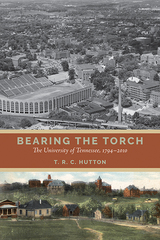
Bearing the Torch stands as a comprehensive history of the University of Tennessee, replete with anecdotes and vignettes of interest to anyone interested in UT, from the administrators and chancellors to students and alums, and even to the Vols fans whose familiarity with the school comes mainly from the sports page. It is also a biography of a school whose history reflects that of its state and its nation. The institution that began as Blount College in 1794 in a frontier village called Knoxville exemplifies the relationship between education and American history.
This is the first scholarly history of UT since 1984. T. R. C. Hutton not only provides a much-needed update, but also seeks to present a social history of the university, fully integrating historical context and showing how the volume’s central “character”—the university itself—reflects historical themes and concerns. For example, Hutton shows how the school’s development was hampered in the early nineteenth century by stingy state funding (a theme that also appears in subsequent decades) and Jacksonian fears that publicly funded higher education equaled elite privilege. The institution nearly disappeared as the Civil War raged in a divided region, but then it flourished thanks to policies that never could have happened without the war. In the twentieth century, students embraced dramatic social changes as the university wrestled with race, gender, and other important issues. In the Cold War era, UT became a successful research institution and entered into a deep partnership with Oak Ridge National Laboratories that persists to this day. All the while UT athletics experienced the highs of national championships and the lows of lawsuits and losing seasons. UT is a university with a universe of historical experiences.
The University of Tennessee’s story has always been defined by inclusion and exclusion, and the school has triumphed when it practiced the former and failed when it took part in the latter. Bearing the Torch traces that ongoing process, richly detailing the University’s contributions to what one president, Joseph Estabrook, called the “diffusion of knowledge among the people.”

The volume also includes essays by Mary Campbell, whose research currently focuses on James Baldwin and Beauford Delaney within the context of the civil rights movement; Glenn Ligon, an internationally acclaimed New York-based artist with intimate knowledge of Baldwin’s writings, Delaney’s art, and American history and society; Levi Prombaum, a curatorial assistant at the Solomon R. Guggenheim Museum who did his doctoral research at University College London on Delaney’s portraits of James Baldwin; and Stephen Wicks, the Knoxville Museum of Art’s Barbara W. and Bernard E. Bernstein Curator, who has guided the KMA’s curatorial department for over 25 years and was instrumental in building the world’s largest and most comprehensive public collection of Beauford Delaney’s art at the KMA.
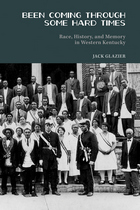
From the earliest days when slaves were brought to western Kentucky, the descendants of both slaves and slave owners in Hopkinsville, Kentucky, have continued to inhabit the same social and historic space. Part ethnography and part historical narrative, Been Coming through Some Hard Times offers a penetrating look at this southern town and the surrounding counties, delving particularly into the ways in which its inhabitants have remembered and publicly represented race relations in their community.
Neither Deep South nor Appalachian, this western Kentucky borderland presented unique opportunities for African American communities and also deep, lasting tensions with powerful whites. Glazier conducted fieldwork in Hopkinsville for some ten months, examining historical evidence, oral histories, and the racialized hierarchy found in the final resting places of black and white citizens. His analysis shows how structural inequality continues to prevail in Hopkinsville. The book’s ethnographic vignettes of worship services, school policy disputes, segregated cemeteries, a “dressing like our ancestors” day at an elementary school, and black family reunions poignantly illustrate the ongoing debate over the public control of memory. Ultimately, the book critiques the lethargy of white Americans who still fail to recognize the persistence of white privilege and therefore stunt the development of a truly multicultural society.
Glazier’s personal investment in this subject is clear. Been Coming through Some Hard Times began as an exploration of the life of James Bass, an African American who settled in Hopkinsville in 1890 and whose daughter, Idella Bass, cared for Glazier as a child. Her remarkable life profoundly influenced Glazier and led him to investigate her family’s roots in the town. This personal dimension makes Glazier’s ethnohistorical account especially nuanced and moving. Here is a uniquely revealing look at how the racial injustices of the past impinge quietly but insidiously upon the present in a distinctive, understudied region.
JACK GLAZIER is a professor of anthropology at Oberlin College. He is the author of Dispersing the Ghetto: The Relocation of Jewish Immigrants across America and Land and the Uses of Tradition among the Mbeere of Kenya.
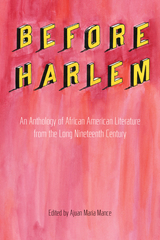
As editor Ajuan Mance notes, previous collections have focused mainly on writing that found a significant audience among white readers. Consequently, authors whose work appeared in African American–owned publications for a primarily black audience—such as Solomon G. Brown, Henrietta Cordelia Ray, and T. Thomas Fortune—have faded from memory. Even figures as celebrated as Frederick Douglass and Paul Laurence Dunbar are today much better known for their “cross-racial” writings than for the larger bodies of work they produced for a mostly African American readership. There has also been a tendency in modern canon making, especially in the genre of autobiography, to stress antebellum writing rather than writings produced after the Civil War and Reconstruction. Similarly, religious writings—despite the centrality of the church in the everyday lives of black readers and the interconnectedness of black spiritual and intellectual life—have not received the emphasis they deserve.
Filling those critical gaps with a selection of 143 works by 65 writers, Before Harlem presents as never before an in-depth picture of the literary, aesthetic, and intellectual landscape of nineteenth-century African America and will be a valuable resource for a new generation of readers.
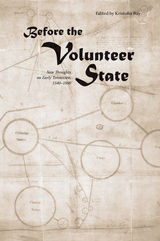
The essays are divided into two parts—the first focusing on the establishment and geopolitical complexities of seventeenth- and early-eighteenth-century life in and around the Tennessee River, and the second exploring the effects of the American Revolution in this geopolitical space. Topics in Part One include Indian life in the late Mississippian era, how contact with Europeans forced a process of migration and change, European understanding of Cherokee strength, and the importance of the Creeks, Cherokees, and Shawnees to early Tennessee history. Part Two offers articles about the confusing milieu into which the region was thrown during the Revolution, the central role of kinship networks for both Indians and whites, and the difficulties of identity formation as Euro-Americans expanded their presence on the Tennessee frontier. The work concludes by addressing the issue of myth and memory and how early Tennessee history was overtaken by nineteenth-century historical narratives that continue to serve as the foundation for understanding the state.
Taken together, these essays provide a gateway through which to reimagine early Tennessee history—a reimagining that demonstrates the significance of the Volunteer State within broader trends in early modern, southern, trans-Appalachian, and Atlantic World history.

Apparently, slumber parties in the mid-South 1970s were plied with a strange ritual. At midnight attendees would gather before a mirror and chant “I don’t believe in the Bell Witch” three times to see if the legendary spook would appear alongside their own reflections—a practice that echoes the “Bloody Mary” pattern following the execution of Mary Queen of Scots centuries ago. But that small circuit of preteen gatherings was neither the beginning nor the end of the Bell Witch’s travels. Indeed, the legend of the haint who terrorized the Bell family of Adams, Tennessee, is one of the best-known pieces of folklore in American storytelling—featured around the globe in popular-culture references as varied as a 1930s radio skit and a 1980s song from a Danish heavy metal band. Legend has it that “Old Kate” was investigated even by the likes of future president Andrew Jackson, who was reported to have said, “I would rather fight the British ten times over than to ever face the Bell Witch again.”
While dozens of books and articles have thoroughly analyzed this intriguing tale, this book breaks new ground by exploring the oral traditions associated with the poltergeist and demonstrating her regional, national, and even international sweep. Author Rick Gregory details the ways the narrative mirrors other legends with similar themes and examines the modern proliferation of the story via contemporary digital media. The Bell Witch in Myth and Memory ultimately explores what people believe and why they believe what they cannot explicitly prove—and, more particularly, why for two hundred years so many have sworn by the reality of the Bell Witch. In this highly engaging study, Rick Gregory not only sheds light on Tennessee’s vibrant oral history tradition but also provides insight into the enduring, worldwide phenomenon that is folklore.
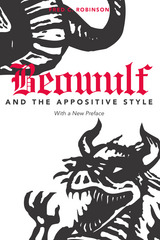
appositive style of Beowulf helps the poet communicate his Christian vision of pagan
life. By alerting the audience to both the older and the newer meanings of words, the
poet was able to resolve the fundamental tension which pervades his narration of
ancient heroic deeds.
Robinson describes Beowulf ’s major themes and the grammatical and stylistic
aspects of its appositive strategies. He then considers the poet’s use of the semantically
stratified vocabulary of Old English poetry to accommodate a party Christian and
partly pre-Christian perspective on the events being narrated. The analysis draws
attention to the ways in which modern editors and lexicographers have obscured stylistic
aspects of the poem by imposing upon it various modern conventions.
Appositional techniques, Robinson shows, serve not only the poet’s major themes
but also his narrative purposes. A grasp of the fundamental role played by the appositive
style in Beowulf gives the reader new ways of understanding some of the epic’s familiar
passages. The new foreword addresses the reception this book has had and examines
recent scholarship in the ongoing interest in this amazing poem.

For anyone who has yet to discover the beauty of the Smokies, the highest North American mountains east of the Mississippi, the trails described here offer a splendid introduction. Scenic overlooks at Mount Le Conte, Clingmans Dome, Gregory Bald, and other peaks are included along these pathways, as are some of the well-known waterfalls of the Park, such as Laurel Falls, Rainbow Falls, and Ramsay Cascades. In addition to vital data about the length of the trail, its elevation gain, and “how to get there,” each trail description is packed with interesting facts and Smoky Mountain lore. Detailed maps are also included. In their introduction, the authors provide a brief overview of the park’s history as well as useful tips for novice hikers.
The Authors: Kenneth Wise, an administrator at the University of Tennessee Library, Knoxville, has hiked in the Great Smoky Mountains National Park for more than twenty years. He is the author of <i>Hiking Trails of the Great Smoky Mountains: A Comprehensive Guide</i>.
James Andrews,a partner in the firm of Andrews, Hudson & Wall, P.C., has hiked the Park trails for more than a decade. He is the coauthor, with Wise, of <i>The Best Overnight Hikes in the Great Smoky Mountains</i>.

Kenneth Wise and James Andrews
Located astride the Tennessee–North Carolina border, the Great Smoky Mountains National Park contains more than one hundred trails that trace eight hundred miles of rugged terrain. This fact is certain to bewilder any newcomer who might be eager to explore the Park’s backcountry but is unsure where to start. This book, intended as a beginner’s guide to hiking the Smokies, offers lively, informative descriptions of twenty-two trails that can be completed in a day or less.
For anyone who has yet to discover the beauty of the Smokies, the highest North American mountains east of the Mississippi, the trails described here offer a splendid introduction. Scenic overlooks at Mount Le Conte, Clingmans Dome, Gregory Bald, and other peaks are included along these pathways, as are some of the well-known waterfalls of the Park, such as Laurel Falls, Rainbow Falls, and Ramsay Cascades. In addition to vital data about the length of the trail, its elevation gain, and “how to get there,” each trail description is packed with interesting facts and Smoky Mountain lore. Detailed maps are also included. In their introduction, the authors provide a brief overview of the park’s history as well as useful tips for novice hikers.
The Authors: Kenneth Wise, an administrator at the University of Tennessee Library, Knoxville, has hiked in the Great Smoky Mountains National Park for more than twenty years. He is the author of Hiking Trails of the Great Smoky Mountains: A Comprehensive Guide.
James Andrews,a partner in the firm of Andrews, Hudson & Wall, P.C., has hiked the Park trails for more than a decade. He is the coauthor, with Wise, of The Best Overnight Hikes in the Great Smoky Mountains.
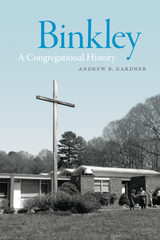
Established in 1958 in the college town of Chapel Hill, North Carolina, the Olin T. Binkley Memorial Baptist Church immediately sought to establish a welcoming religious community—focusing initially on bringing in both Black and White congregants and, as ideas about inclusivity developed, on accepting all people, regardless of identity. By naming itself for a theologically progressive preacher and professor, the fledgling church signaled a perspective unfamiliar to Baptists in the South, which gave the church a radical edge. The church’s first pastor, Robert Seymour, also possessed a progressive vision that resonated with his congregants and pushed them to commit to justice and equality. Soon after its founding, the church strived to challenge inequality in segregated Chapel Hill. Although it remained predominantly White well into the twenty-first century, Binkley evolved to become increasingly aware of issues of gender equality, equity, LGBTQ inclusion, and climate justice. Addressing these issues was Binkley’s way of building God’s kingdom on earth as it is in heaven.
Binkley: A Congregational History tells the story of a single church with a complicated past, demonstrating that, while liberal in heritage, it operated with an unconsciously White, heteronormative worldview that slowly evolved into a distinct expression of faith. The author also draws on scholarship within the broader field of American religious history to position Binkley—with all its complexities, conflicts, and nuances—within the broader context of twentieth-century liberal Protestantism. Perhaps most importantly, Gardner tells the story of a place animated by a vision of Christianity that is often overlooked or drowned out by larger and louder Christian groups. He compellingly shows how this progressive vision of Christianity has shaped Binkley’s commitment to its community and beyond.
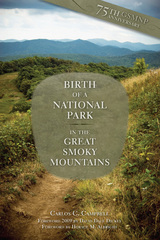
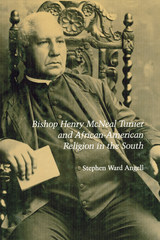
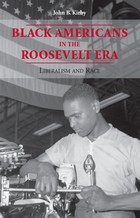
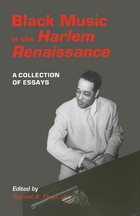
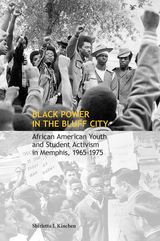
While Black Power activism on the coasts and in the Midwest has attracted considerable scholarly attention, much less has been written about the movement’s impact outside these hotbeds. In Black Power in the Bluff City, Shirletta J. Kinchen helps redress that imbalance by examining how young Memphis activists, like Coby Smith and Charles Cabbage, dissatisfied by the pace of progress in a city emerging from the Jim Crow era, embraced Black Power ideology to confront such challenges as gross disparities in housing, education, and employment as well as police brutality and harassment. Two closely related Black Power organizations, the Black Organizing Project and the Invaders, became central to the local black youth movement in the late 1960s. Kinchen traces these groups’ participation in the 1968 sanitation workers’ strike—including the controversy over whether their activities precipitated events that culminated in Martin Luther King’s assassination—and their subsequent involvement in War on Poverty programs. The book also shows how Black Power ideology drove activism at the historically black LeMoyne-Owen College, scene of a 1968 administration-building takeover, and at the predominately white Memphis State University, where African American students transformed the campus by creating parallel institutions that helped strengthen black student camaraderie and consciousness in the face of marginalization.
Drawing on interviews with activists, FBI files, newspaper accounts from the period, and many other sources, the author persuasively shows not only how an emerging generation helped define the black freedom struggle in Memphis but also how they applied the tenets of Black Power to shape the broader community.

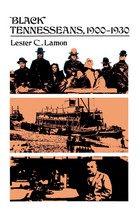
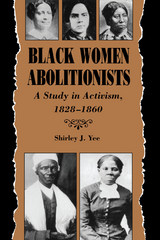

Black women in the early fiction, responding to their elders as well as to religious influences, see their lives in terms of duty as wives, mothers, sisters, and lovers. Failure in any of these roles leads to guilt feelings and the expectation of damnation. In later works, Baldwin adopts a new point of view, acknowledging complex extenuating circumstances in lieu of pronouncing moral judgement. Female characters in works written at this stage eventually come to believe that the church affords no comfort.
Baldwin subsequently makes villains of some female churchgoers, and caring women who do not attend church become his most attractive characters. Still later in Baldwin's career, a woman who frees herself of guilt by moving completely beyond the church attains greater contentment than almost all of her counterparts in the earlier works.
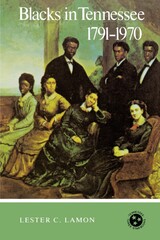
While black men and women have played important roles in Tennessee’s growth and history; slavery, caste, and segregation have forced them to live apart and to create a separate history. In this historical analysis, Lester Lamon offers an understanding of the history of black Tennesseans, recognizing that they have been both a part of and apart from the developments affecting the dominant white population of the state. The different economic priorities, political loyalties, and racial populations evident in the three “Grand Divisions” of the state have created superficial differences in the historical experiences of blacks in the three regions. Intrastate competition has reinforced these sectional differences, but a common factor found in the black experience has been a racial “givenness”—the idea that blacks should not expect equality or free association with whites. Tennessee’s black history is not one of a surrender to racial pressure, but, instead, is a story of courage, sacrifice, frustration, and dreams of freedom, equality, and respect for human dignity.
Blacks in Tennessee provides a necessary and culturally enriching addition to the traditional history of the state.

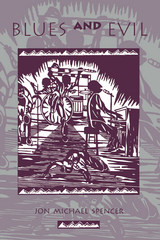
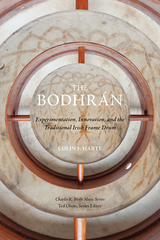
In the past fifty years, the bodhrán, or traditional Irish circular frame drum, has undergone a rapid evolution in development. Traditionally, it is a shallow drum ranging from ten to twenty-six inches in diameter, covered in goatskin on the top (or drum) side and open on the other. Unlike any other instrument associated with Irish traditional music, the bodhrán has been dramatically altered by its confrontation with modern instrument design, performance techniques, and musical practice. Colin Harte’s The Bodhrán: Experimentation, Innovation, and the Traditional Irish Frame Drum presents a definitive history of the bodhrán from its early origins to its present-day resurgence in Irish American folk music.
The bodhrán has global roots and bears many characteristics of older drums from northern Africa and the Middle East. Harte picks up on these basic similarities and embarks on an engaging tour of the instrument’s historical and organological development, gradual evolution in playing styles, and more recent history of performative practice. Drawing from a host of interviews over a multi-year period with participants primarily located in Europe and North America, this work provides a platform for multiple perspectives regarding the bodhrán. Participants include bodhrán makers, professional performers, educators, amateur musicians, historians, and enthusiasts. Growing out of rich ethnographic interviews, this book serves as the definitive reference for understanding and navigating the developments in the bodhrán’s history, organology, performance practices, and repertoire.

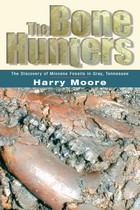
The Bone Hunters recounts the fascinating details of a remarkable chance discovery. In his engaging firsthand account, Moore writes of the people behind the excavation of the site and how their efforts helped save valuable artifacts for ongoing study. Numerous photographs capture the excellent condition of fossils at Gray. Moore also describes the contours of what the ancient landscape may have looked like and details the governmental action that ultimately preserved this Tennessee treasure.
Harry Moore manages the Tennessee Department of Transportation’s Geotechnial Engineering office in Knoxville. His previous books are A Roadside Guide to the Geology of the Great Smoky Mountains National Park, A Geologic Trip Across Tennessee by Interstate 40, and Discovering October Roads: Fall Colors and Geology in Rural East Tennessee (co-written with Fred Brown).

rate, rising from fifty thousand at the outbreak of revolution to more than a million as the nation
edged toward civil war. As the Second Great Awakening swept through the Old Southwest, it generated
religious enthusiasm among Methodist and Baptist converts who were intent upon replacing
old forms of Protestantism with an evangelical vibrancy that reflected and often contributed
to the unsettled social relations of the new republic. No place was better suited to embrace this
enthusiasm than Kentucky. In Born of Water and Spirit, Richard C. Traylor explores the successes
and failures of Baptists in this area, using it as a window into the elements of Baptist life
that transcended locale.
Traylor argues that the achievements of Baptists in Kentucky reflect, in many ways, their success
and coming of age in the early national period of America. The factionalism that characterized
frontier Baptists, he asserts, is an essential key to understanding who the colonial Baptists had
been, who they were becoming in the late eighteenth through the mid-nineteenth centuries, and
who they would become after the Civil War.
In this highly nuanced study, Traylor looks at the denomination in light of what he calls its
“Baptist impulse”—the movement’s fluid structure and democratic spirit. These characteristics
have proven to be its greatest strength as well as the source of its most terrible struggles. Yet, confronting
theological clashes, along with the challenges that come with growth, forged the Baptist
identity and shaped its future.
The first three chapters examine the primary elements of the impulse: rituals of conversion,
baptism, and communion; the Baptist preacher; and the significance of the local church to the
sect. Following these chapters are explorations of the reformations and forces of change in the
early to mid-1800s, the role of women and African Americans in developing the group, and the
refinement and reorientation of priorities from 1840 to 1860. This important denominational history
will be of great value to scholars of American religious history and the history of the early
American republic.
Richard C. Traylor is a professor of history at Hardin-Simmons University in
Abilene, Texas. His articles have been published in Baptist History and Heritage and
Missouri Historical Review.
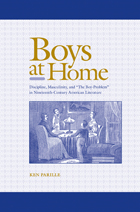
In this groundbreaking book, Ken Parille seeks to do for nineteenth-century boys what the past three decades of scholarship have done for girls: show how the complexities of the fiction and educational materials written about them reflect the lives they lived. While most studies of nineteenth-century boyhood have focused on post-Civil War male novelists, Parille explores a broader archive of writings by male and female authors, extending from 1830-1885.
Boys at Home offers a series of arguments about five pedagogical modes: play-adventure, corporal punishment, sympathy, shame, and reading. The first chapter demonstrates that, rather than encouraging boys to escape the bonds of domesticity, scenes of play in boys’ novels reproduce values associated with the home. Chapter 2 argues that debates about corporal punishment are crucial sources for the culture’s ideas about gender difference and pedagogical practice. In chapter 3, “The Medicine of Sympathy,” Parille examines the affective nature of mother-daughter and mother-son bonds, emphasizing the special difficulties that “boy-nature” posed for women. The fourth chapter uses boys’ conduct literature and Louisa May Alcott’s Little Women – the preeminent chronicle of girlhood in the century – to investigate not only Alcott’s fictional representations of shame-centered discipline but also pervasive cultural narratives about what it means to “be a man.” Focusing on works by Lydia Sigourney and Francis Forrester, the final chapter considers arguments about the effects that fictional, historical, and biographical narratives had on a boy’s sense of himself and his masculinity.
Boys at Home is an important contribution to the emerging field of masculinity studies. In addition, this provocative volume brings new insight to the study of childhood, women’s writing, and American culture.
Ken Parille is assistant professor of English at East Carolina University. His articles have appeared in Children’s Literature, Tulsa Studies in Women’s Literature, Papers on Language and Literature, and Children’s Literature Association Quarterly.
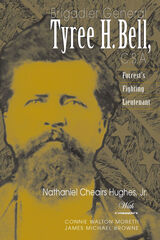
Using Bell’s unpublished autobiography and other primary materials, including Confederate letters, diaries, and official correspondence, author Nathaniel Cheairs Hughes, Jr., worked with Connie Walton Moretti and Jim Browne, two of Bell’s great-great-great grandchildren, to augment Bell’s manuscript and to write the first full-length biography of this significant Confederate soldier.
Born in Kentucky, Bell grew up on a Tennessee plantation and became a farmer and stock raiser. At the outbreak of war, his neighbors asked him to be captain of a company of volunteers they were raising for the Provisional Army of Tennessee. In 1861, he entered service with the Twelfth Tennessee Infantry and quickly became its lieutenant colonel. He distinguished himself in the battle of Belmont, where he commanded the regiment, and continued his steady performance at Shiloh.
By the following year he was promoted to colonel and led the Twelfth Tennessee in the Kentucky campaign, rejoining Kirby Smith’s army for battles at Cumberland Gap, Richmond, and Perryville. After obtaining permission to leave the Army of Tennessee, he became a brigade commander under Forrest. Bell lad half of Forrest’s forces in the attack at Fort Pillow as well as in numerous other battles and expeditions. After the war, Bell returned to Sumner County to resume farming and eventually moved his family to California.
In addition to giving insight into the man whose courage and leadership earned him the nickname “Forrest’s Right Arm,” the authors explore Bell’s early years in Tennessee and his adventurous postwar career in business and land speculation. This portrait of Bell is one of an unsung leader who risked much to fight for the Confederacy.
Nathaniel Cheairs Hughes, Jr., is the author of a number of books, including The Pride of the Confederate Artillery: The Washington Artillery in the Army of Tennessee, and General William J. Hardee, C.S.A He is also coauthor of Theodore O’Hara: Poet-Soldier of the Old South and coeditor of Military Memoirs of Brigadier General William Passmore Carlin, U.S.A. He lives in Chattanooga, Tennessee.
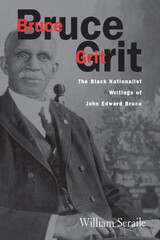
Bruce wrote for more than a hundred different newspapers and founded several of them, including the Argus, the Sunday Item, and Washington Grit in Washington, D.C., and the Weekly Standard in Yonkers, New York. A cultural nationalist and Pan-Africanist, Bruce was known as a race-first proponent. In his quest to see that African Americans were granted full political and civil rights, he championed the contributions of African civilization to western culture as a whole, amassing an impressive collection of books, articles, and other scholarly documentation. For most of his career, he believed that African Americans would eventually be able to claim an equal share of the American Dream. However, by the end of his life, he became disillusioned and concluded that the best hope for their future lay in emigration back to Africa.
Seraile traces Bruce’s shifting strategies and tactics and his alliances with famous contemporaries such as Arthur A. Schomburg, Carter G. Woodson, Booker T. Washington, and Marcus Garvey. He argues that underlying all of Bruce’s work was what would become his greatest legacy: his promotion of history and culture of African people in the diaspora as valuable fields of study.
The Author: William Seraile is professor of black studies at Lehman College. He is the author of Voice of Dissent: Theophilus Gould Steward and Black America, Fire in His Heart: Bishop Benjamin Tucker Tanner and the A.M.E. Church, and New York’s Black Regiments During the Civil War.

In Building a Protestant Left, Mark Hulsether uses the history of C&C as a case study to explore changing ideas about religion and society in the latter half of the twentieth century. He follows the twists and turns of this story from Niebuhr's Christian realist positions of the 1940s, through Protestant participation in the complex social movements of the 1950s and 1960s, to the emergence of various liberation theologies—African American, feminist, Latin American, and others—that used C&C as a central arena of debate in the 1970s and 1980s. Throughout, Hulsether places these changes in the context of postwar cultural and social history, relating C&C's theological and ethical positions to the broader social and political issues the journal addressed. Included, for example, is an illuminating discussion of C&C's positions in relation to one of the major developments of recent decades: the rise of neoconservatism and the religious right.
Engagingly written, Building a Protestant Left bridges the gap between secularized history and cultural studies on the one hand and traditional religious studies and religious ethics on the other. It also bridges an important generational gap within public-minded religious thought—it is as well informed on the issues that engaged the magazine during Niebuhr's heyday (from the 1940 to the 1960s) as on the liberation theologies and other radical positions that came afterward.
The Author: Mark Hulsether is assistant professor of religious studies and American studies at the University of Tennessee, Knoxville.
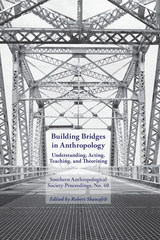
The theme of the meeting, “Ports, Hubs and Bridges: Key Links in Anthropological Theory and Practice,” is a reference to the important interconnections found not only within the discipline among the various types of anthropologies, but also between the anthropological professional and those whom anthropologists teach, rely on for information, or otherwise focus on in their research.
The papers in this volume elaborate upon bridges that can be or have been built in theory, pedagogy, and practice, and in a variety of cultural contexts. They are organized in three groups.Part I consists of papers that emphasize theory and conceptual issues; part II is for papers about teaching and practice; and, part III is for papers with an ethnography focus.

Sciorra spent thirty-five years researching these community art forms and interviewing Italian immigrant and U.S.-born Catholics. By documenting the folklife of this group, Sciorra reveals how Italian Americans in the city use expressive culture and religious practices to transform everyday urban space into unique, communal sites of ethnically infused religiosity. The folk aesthetics practiced by individuals within their communities are integral to understanding how art is conceptualized, implemented, and esteemed outside of museum and gallery walls. Yard shrines, sidewalk altars, Nativity presepi, Christmas house displays, a stone-studded grotto, and neighborhood processions—often dismissed as kitsch or prized as folk art—all provide examples of the vibrant and varied ways contemporary Italian Americans use material culture, architecture, and public ceremonial display to shape the city’s religious and cultural landscapes.
Written in an accessible style that will appeal to general readers and scholars alike, Sciorra’s unique study contributes to our understanding of how value and meaning are reproduced at the confluences of everyday life.
Joseph Sciorra is the director of Academic and Cultural Programs at the John D. Calandra Italian American Institute, Queens College. He is the editor of Italian Folk: Vernacular Culture in Italian-American Lives and co-editor of Embroidered Stories: Interpreting Women's Domestic Needlework from the Italian Diaspora.
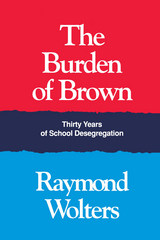

What effect have twenty-five years of school desegregation had on Nashville? Richard A. Pride and J. David Woodard evaluate the city’s efforts at integration and systematically examine the crucial issues involved. They argue that the controversy has little to do with costs, bus routes, or achievement test scores. Instead, they claim, it strikes at fundamental cultural issues.
Nashville’s white citizens, the authors observe, resisted busing from the beginning. After nine years’ experience, blacks had become equally hostile to the notion, arguing that they, and they alone, bore the burden. Their schools had been closed, their offspring had had to travel farther for instruction, and their institutions and culture had been disrupted. Blacks rejected assimilation, demanding schools in their neighborhoods in which their children would predominate and would be supervised and taught by people of their own race.
A federal judge heard the case. He agreed that the costs of the experiment had outweighed the benefits. In 1980, in the first such decision made in the nation, he ordered an end to busing. His opinion explained his concern that busing was creating two school systems – one private, white, and middle class, one public, black, and poor. The legal impact of the case was blunted when, on appeal, the Sixth Circuit Court ordered busing be re-established in Nashville.
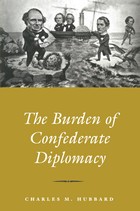
"As the first examination of the topic since King Cotton Diplomacy (1931), this work deserves widespread attention. Hubbard offers a convincingly bleak portrayal of the limited skills and myopic vision of Rebel diplomacy at home and abroad."—Virginia Magazine of History and Biography
Of the many factors that contributed to the South’s loss of the Civil War, one of the most decisive was the failure of Southern diplomacy. In this penetrating work, Charles M. Hubbard reassesses the diplomatic efforts made by the Confederacy in its struggle to become an independent nation. Hubbard focuses both on the Confederacy’s attempts to negotiate a peaceful separation from the Union and Southern diplomats’ increasingly desperate pursuit of state recognition from the major European powers.
Drawing on a large body of sources, Hubbard offers an important reinterpretation of the problems facing Confederate diplomats. He demonstrates how the strategies and objectives of the South’s diplomatic program—themselves often poorly conceived—were then placed in the hands of inexperienced envoys who were ill-equipped to succeed in their roles as negotiators.
The Author: Charles M. Hubbard is associate professor of history at Lincoln Memorial University and executive director of the Abraham Lincoln Memorial Museum in Harrogate, Tennessee.

Brady doesn't resort to dissecting poems here, though poems-his own and those of many of his masters, from Yeats to Tu Fu-do appear. Instead, the poetic language of his observations seems to fulfill a greater purpose: “Voiced, the poem is transfigured from a printed glyph to sensory language: ephemeral, but with a tensile strength derived from the collective memory that births it. Critics may feel differently, but what matters to a poem is not how many times it is reprinted, but how deeply it penetrates the heart.”
These essays are meditations grounded in the author's life as a poet, teacher, publisher, musician, traveler, and organizer. In one, readers encounter non-traditional students who attend class after work and whose lives are already shaped by burden. Brady recognizes the tension between reading poetry as an academic exercise and reading it for its power to endow all people with a broader sense of the self that is informed by both the dead and the living. He celebrates the challenges that his students bring to the classroom by forging headlong into discussions that other instructors would cringe at-as when a student declares that he doesn't like reading old poetry but instead likes greeting-card poems. Brady masterfully turns this potentially deflating moment into one that is both validating and deeply inspiring-for student and reader.
READERS
Browse our collection.
PUBLISHERS
See BiblioVault's publisher services.
STUDENT SERVICES
Files for college accessibility offices.
UChicago Accessibility Resources
home | accessibility | search | about | contact us
BiblioVault ® 2001 - 2024
The University of Chicago Press









